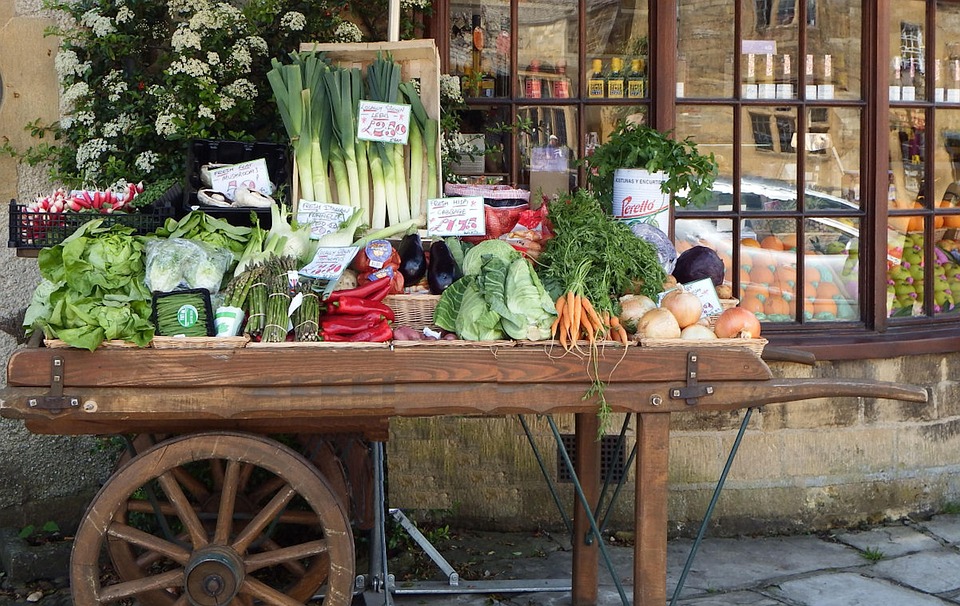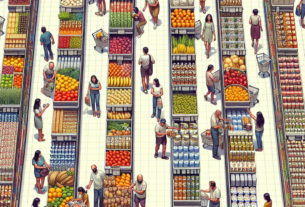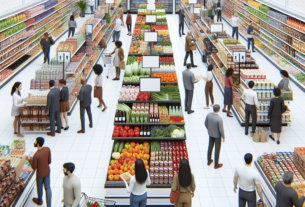The State of the Top 10 Grocery Retail Companies in the United States
The grocery retail industry in the United States is highly competitive, with several major players vying for market share. In this report, we will take a closer look at the top 10 grocery retail companies in the country, analyzing their financials, market share, volumes, future plans, and more.
1. Walmart
Walmart is the largest grocery retailer in the United States, with a significant market share. The company operates a vast network of stores across the country, offering a wide range of grocery products at competitive prices. In 2024, Walmart reported total revenue of $559 billion, with a significant portion coming from its grocery business.
Walmart’s future plans include expanding its grocery delivery and pickup services to reach more customers. The company is also investing in technology to enhance the shopping experience for its customers, such as implementing smart shelves and automated checkout systems.
2. Kroger
Kroger is another major player in the grocery retail industry, with a strong presence in the United States. The company reported total revenue of $132 billion in 2024, with a significant portion coming from its grocery business. Kroger operates various store formats, including supermarkets, hypermarkets, and convenience stores.
Kroger’s future plans include investing in digital initiatives to enhance the customer experience, such as improving its online ordering and delivery services. The company is also focusing on expanding its private label offerings to provide customers with more affordable options.
3. Costco
Costco is a popular warehouse club retailer that also sells a wide range of grocery products. The company reported total revenue of $200 billion in 2024, with a significant portion coming from its grocery business. Costco is known for its bulk offerings and competitive prices.
Costco’s future plans include expanding its e-commerce business to reach more customers. The company is also focusing on sustainability initiatives, such as reducing food waste and sourcing products from sustainable suppliers.
4. Albertsons
Albertsons is a leading grocery retailer in the United States, operating a network of stores under various banners. The company reported total revenue of $70 billion in 2024, with a significant portion coming from its grocery business. Albertsons offers a wide range of products, including fresh produce, meat, and dairy.
Albertsons’ future plans include expanding its store footprint and investing in technology to improve the shopping experience for its customers. The company is also focusing on enhancing its private label offerings to differentiate itself from competitors.
5. Ahold Delhaize
Ahold Delhaize is a multinational grocery retailer with a strong presence in the United States. The company reported total revenue of $80 billion in 2024, with a significant portion coming from its U.S. operations. Ahold Delhaize operates several store banners, including Stop & Shop, Giant Food, and Food Lion.
Ahold Delhaize’s future plans include focusing on sustainability initiatives, such as reducing plastic waste and sourcing products from sustainable suppliers. The company is also investing in technology to enhance the customer experience, such as implementing self-checkout kiosks and personalized promotions.
6. Publix
Publix is a regional grocery retailer that operates stores in the southeastern United States. The company reported total revenue of $42 billion in 2024, with a significant portion coming from its grocery business. Publix is known for its customer service and high-quality products.
Publix’s future plans include expanding its store footprint in existing markets and entering new markets to reach more customers. The company is also investing in technology to improve its online ordering and delivery services, as well as enhance the in-store shopping experience.
7. Target
Target is a popular retail chain that also sells a wide range of grocery products. The company reported total revenue of $103 billion in 2024, with a significant portion coming from its grocery business. Target offers a mix of national brands and private label products.
Target’s future plans include expanding its grocery offerings and investing in technology to enhance the shopping experience for its customers. The company is also focusing on sustainability initiatives, such as reducing food waste and sourcing products from sustainable suppliers.
8. H-E-B
H-E-B is a regional grocery retailer that operates stores in Texas and Mexico. The company reported total revenue of $30 billion in 2024, with a significant portion coming from its grocery business. H-E-B is known for its high-quality products and customer service.
H-E-B’s future plans include expanding its store footprint in existing markets and entering new markets to reach more customers. The company is also investing in technology to improve its online ordering and delivery services, as well as enhance the in-store shopping experience.
9. Meijer
Meijer is a regional grocery retailer that operates stores in the Midwest. The company reported total revenue of $20 billion in 2024, with a significant portion coming from its grocery business. Meijer offers a wide range of products, including fresh produce, meat, and dairy.
Meijer’s future plans include expanding its store footprint and investing in technology to improve the shopping experience for its customers. The company is also focusing on sustainability initiatives, such as reducing plastic waste and sourcing products from sustainable suppliers.
10. Wegmans
Wegmans is a regional grocery retailer that operates stores in the Northeast. The company reported total revenue of $15 billion in 2024, with a significant portion coming from its grocery business. Wegmans is known for its high-quality products and customer service.
Wegmans’ future plans include expanding its store footprint in existing markets and entering new markets to reach more customers. The company is also investing in technology to improve its online ordering and delivery services, as well as enhance the in-store shopping experience.
In conclusion, the top 10 grocery retail companies in the United States are all major players in the industry, each with its own strengths and strategies for growth. As competition continues to intensify, these companies will need to adapt to changing consumer preferences and technological advancements to maintain their market share and relevance in the industry.
For more information on the state of the global grocery retail industry in 2025, including trends, challenges, and opportunities, visit CulinaryCoverage.com.



